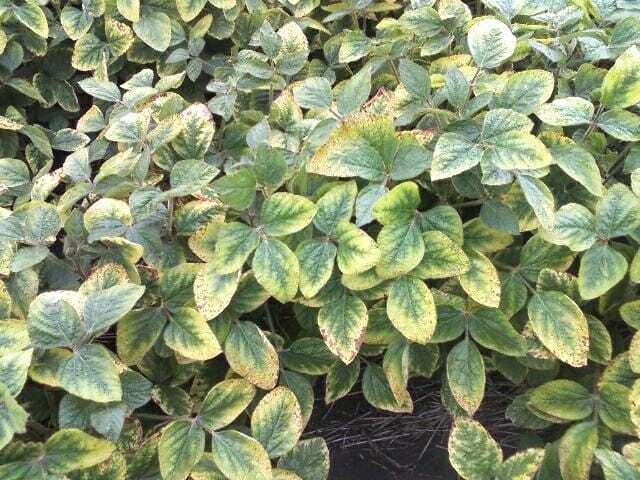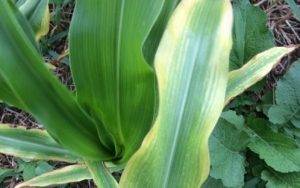
Corn and soybeans can exhibit similar signs of potassium deficiency. Potassium deficient corn plants will begin yellowing along the outside edges of their leaves. Overtime, the lowest leaves of the plant may turn brown.
Similar to corn, potassium deficient soybeans begin yellowing along the edges of the newest leaves. This yellowing will start on the outer edge of the leaves and work inward.
Deficiency Causes
Compacted, dry soil can prevent proper potassium uptake and stifle root development, even if soil has adequate levels of potassium. Cool soils can also slow root development, resulting in slow nutrient uptake.
Potassium is an essential nutrient responsible for controlling the stomata. The stomata allow the plant to absorb water, carbon dioxide and oxygen. As a result, inadequate potassium absorption can reduce overall yield or lead to stunted growth in corn and soybeans. The majority of potassium uptake occurs four to six weeks after planting, so the effects of potassium deficiency may not be exhibited right away.

Treatment Options and What to Look For
Proper rainfall is the main solution for correcting potassium deficiency in-season. Minimum tillage would help break up compacted soil, leading to proper root development.
Applying potassium after planting will not always be effective if the soil is dry since water is still required for proper absorption. However, some positive effects from applying potassium may be seen in the following year’s crop.
Potash fertilizer should be applied before planting season in corn and soybeans where results have been the most effective. Sandy soils are associated with the lowest absorption rate of potassium and struggle to retain the nutrient after it is applied.
If signs and symptoms do not diminish following rainfall, this may be a sign of potassium-deficient soil. It is advised to apply potassium before planting in order to combat any future signs of deficiency.
